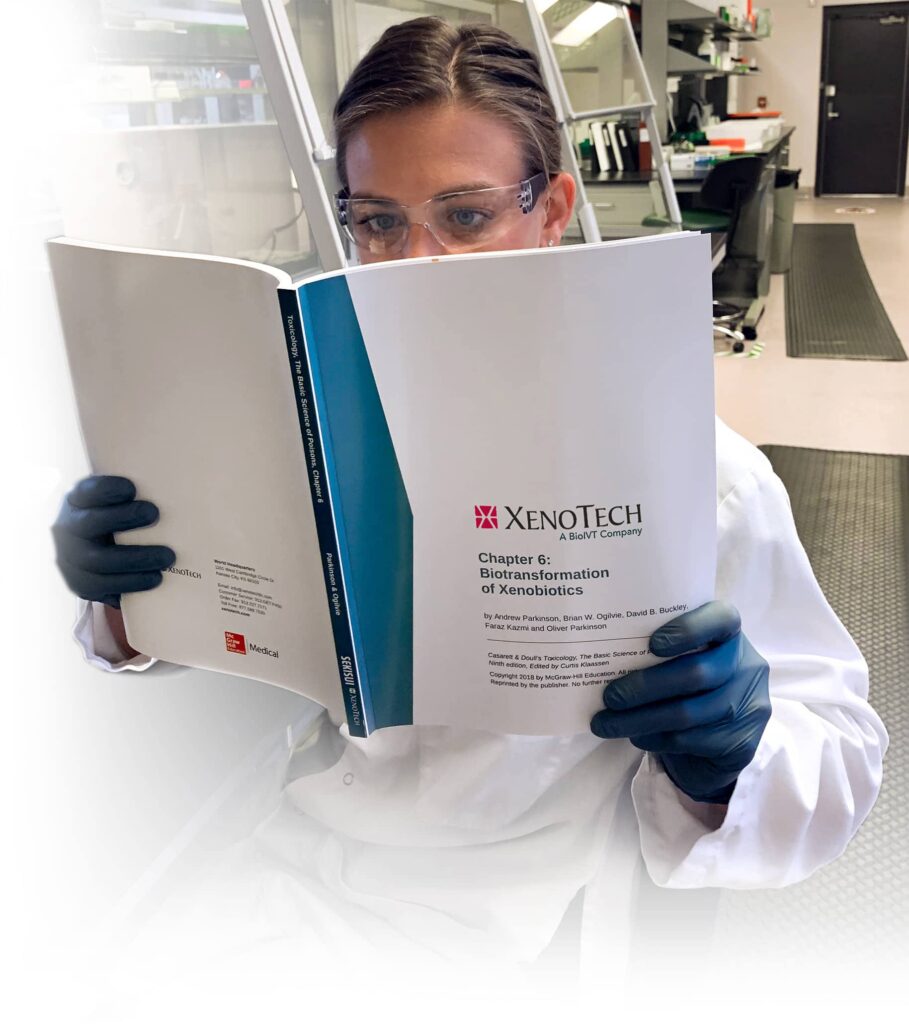
Induction of UDP-Glucuronosyltransferases in Cultures of Fresh and Immortalized Human Hepatocytes
Full Title
Induction of UDP-Glucuronosyltransferases in Cultures of Fresh and Immortalized Human Hepatocytes
Abstract
We have examined the induction of UDP-glucuronosyltransferases (UGTs) in primary cultures of human hepatocytes and in immortalized human hepatocytes (Fa2N-4 cells) under conditions that result in the induction of cytochrome P450 (CYP) enzymes.
Primary cultures of human hepatocytes were treated daily for three days with either vehicle (0.1% DMSO or saline) or one of several prototypical human CYP inducers, namely b-naphthoflavone, omeprazole, phenobarbital, rifampin and isoniazid. Microsomes prepared from the primary hepatocyte cultures were analyzed by LC-MS/MS for thyroxine (T4) and triiodothyronine (T3) glucuronidation, and cell lysates were analyzed for UGT1A1, UGT1A6, UGT1A9, UGT2B4 and UGT2B7 mRNA expression by the branched DNA (bDNA) assay. UGT1A1 mRNA levels increased (> 2 fold) following treatment of cultures with b-naphthoflavone, omeprazole, phenobarbital, rifampin or isoniazid. UGT1A6 mRNA expression was induced by b-naphthoflavone and isoniazid. UGT1A9 mRNA expression was induced by rifampin. UGT2B4 mRNA expression was induced by b-naphthoflavone and rifampin. UGT2B7 mRNA expression was induced by b-naphthoflavone and phenobarbital.
Fa2N-4 cells were treated for 3 days with DMSO (vehicle), omeprazole, phenobarbital, rifampin or 3-methylcholanthrene. Cells were analyzed for UGT1A1, 1A6, 1A9, 2B4 and 2B7 mRNA expression. Omeprazole induced UGT1A1 mRNA (8.8 fold) and UGT1A9 mRNA (4.4 fold) whereas b-naphthoflavone caused a 4.7-fold increase in UGT1A1 mRNA levels. The other inducers had little or no effect on UGT mRNA expression in Fa2N-4 cells. Microsomal UGT activity toward triiodothyronine and thyroxine was not induced in immortalized human hepatocytes treated with b-naphthoflavone or rifampin. Although statistically different from samples treated with vehicle, treatment of cultured human hepatocytes with rifampin caused less than a 2-fold increase in UGT activity toward T3. These results suggest that human UGTs are not as highly inducible as certain human CYP enzymes, nor as inducible as certain UGTs in rats.